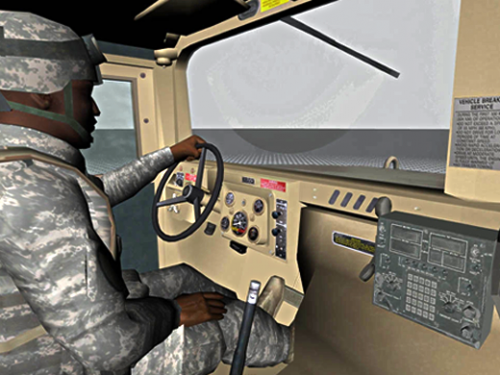First findings of virtual reality exposure therapy for PTSD

(Medical Xpress)—A randomized controlled clinical trial of Iraq and Afghanistan veterans with post-traumatic stress disorder (PTSD) found that shorter doses of virtual reality exposure therapy (VRE) reduces PTSD diagnoses and symptoms. The study was published in the April 18, 2014 online edition of the American Journal of Psychiatry.
Researchers at Emory University conducted the study with 156 veterans with combat-related PTSD. After an introductory session, each veteran was randomly assigned to receive d-cycloserine (DCS) (53 subjects), alprazolam (50 subjects), or a placebo (53 subjects) before each of five sessions of VRE.
The study found PTSD symptoms significantly improved from pre- to post-treatment with the VRE therapy and the DCS may enhance the VRE results for those veterans who demonstrated better emotional learning in sessions. In addition to self-reported symptoms, researchers used objective measures of cortisol, a stress hormone, and the startle response, and found reductions in reactivity after treatment. Alprazolam, known more commonly as Xanax, impaired recovery from symptoms.
"D-cycloserine, combined with only five sessions of the virtual reality exposure therapy, was associated with significant improvements in objective measures of startle and cortisol and overall PTSD symptoms for those who showed emotional learning in sessions," says lead researcher Barbara Rothbaum, PhD, professor of psychiatry and behavioral sciences at Emory University School of Medicine and director of the Trauma and Anxiety Recovery Program.
The double-blind, placebo-controlled study consisted of an initial screening assessment, six treatment visits, and follow-up assessments at three, six and 12 months post-treatment. The virtual reality exposure therapy involved 30-45 minutes of exposure to virtual environments on a head mounted video display that attempt to match stimuli described by the veteran. Scenes depict a variety of Iraq and Afghanistan environments, including street scenes and neighborhoods, as well as from different points of view, i.e. as a driver, passenger, or walking on foot. Thirty minutes before each session, participants took a single pill.
"We were very excited to see the substantial gains in self-reported and objective indices of PTSD with only five sessions of the virtual reality exposure therapy combined," says Rothbaum.

















